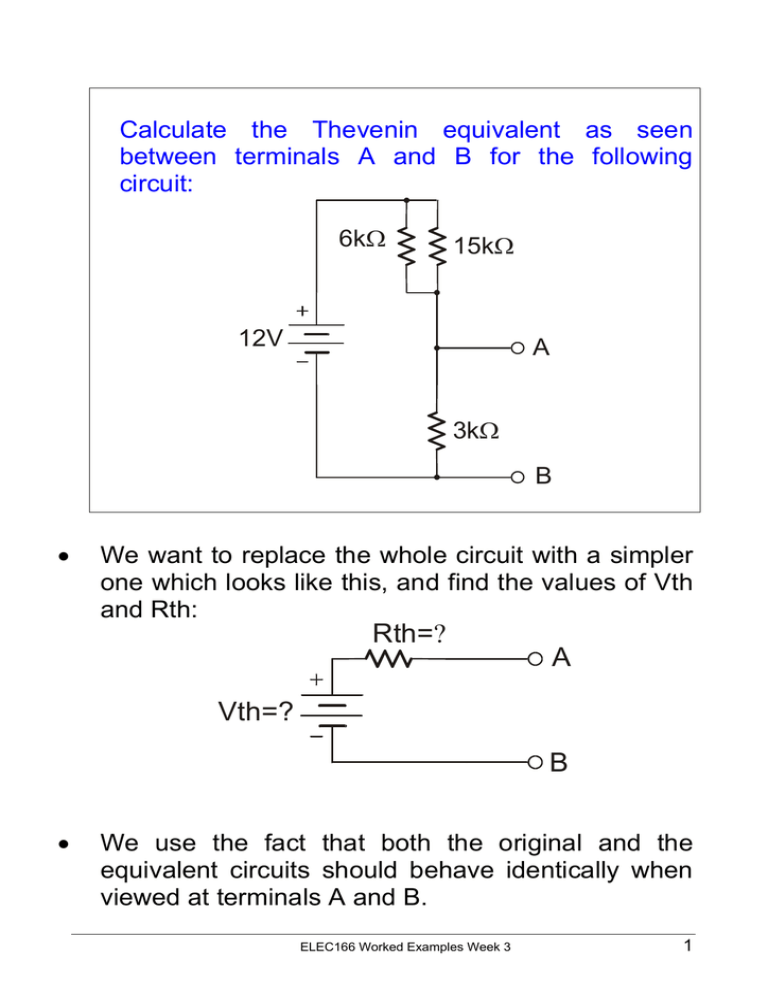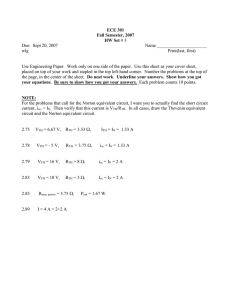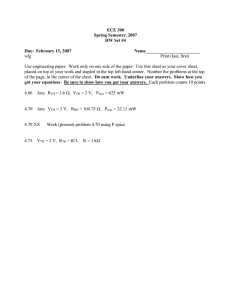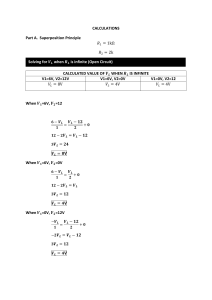Vth=? Rth=? A B
advertisement

Calculate the Thevenin equivalent as seen between terminals A and B for the following circuit: 6kΩ 15kΩ 12V A 3kΩ B • We want to replace the whole circuit with a simpler one which looks like this, and find the values of Vth and Rth: Rth=? A Vth=? B • We use the fact that both the original and the equivalent circuits should behave identically when viewed at terminals A and B. ELEC166 Worked Examples Week 3 1 • First consider the open-circuit voltage between A and B for both circuits. In the original circuit, the 6kΩ||15kΩ pair and the 3kΩ resistors form a potential divider, so the voltage between A and B is 3kΩ 12V × = 4.94V 3kΩ + 6kΩ || 15kΩ In the equivalent circuit, since no current flows, the voltage across Rth is zero. So the voltage between A and B is just Vth. Hence Vth = 4.94V. • We still need to solve for Rth. If we now connect A directly to B with a wire, identical currents should flow in this wire in both circuits. In the original circuit, this short-circuit current will be I SC = 12V 12V = = 2.8mA 6kΩ in parallel with 15kΩ 4.286kΩ (note that the 3kΩ resistor is shorted out). In the equivalent circuit, this short-circuit current is just equal to Vth/Rth. Hence ELEC166 Worked Examples Week 3 2 Vth 4.94V = = 2.8 ×10 −3 A Rth Rth and solving this gives Rth = 1765Ω. • Thus the final Thevenin equivalent circuit is: 1.765kΩ A 4.94V B ELEC166 Worked Examples Week 3 3





